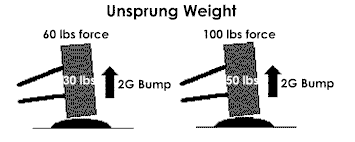I have tube shocks on all four corners of my car and I LOVE the ride and handling. My conversion is inspired by Nial's but somewhat different in execution... at least on the front. My conversion requires no modifications to the car whatsoever. My rears are done almost exactly as described on Nial's web page. I invested a lot of time developing my conversion with the idea that one day I would sell it as a kit. In the end, I spent way more than buying a set of rebuilt shocks from Peter C... and ended up with a kit that could not compete with PeterC's pricing. If I did it all over again, I would buy the rebuilt shocks, but I do really love the ride/handling of my care, and I am super proud of my engineering.
While contemporary cars are built to very exacting engineering specifications... Spridgets were not. They were literally originally assembled from spare parts lying around the factory. Shock valving was engineered by sticking something in the car, taking it on the track and revising based on driver experience. Bolting something on the car, taking it for a spin and seeing how you like it is totally consistent with the engineering practices used to develop the car.
But if economy is your primary concern and you are not afflicted by an illness that compels you to do things that people tell you can't/shouldn't be done, your best bet is to buy rebuilts from PeterC.

 Hi Guest!
Hi Guest!

 smilie in place of the real @
smilie in place of the real @
 Pretty Please - add it to our Events forum(s) and add to the calendar! >>
Pretty Please - add it to our Events forum(s) and add to the calendar! >> 



